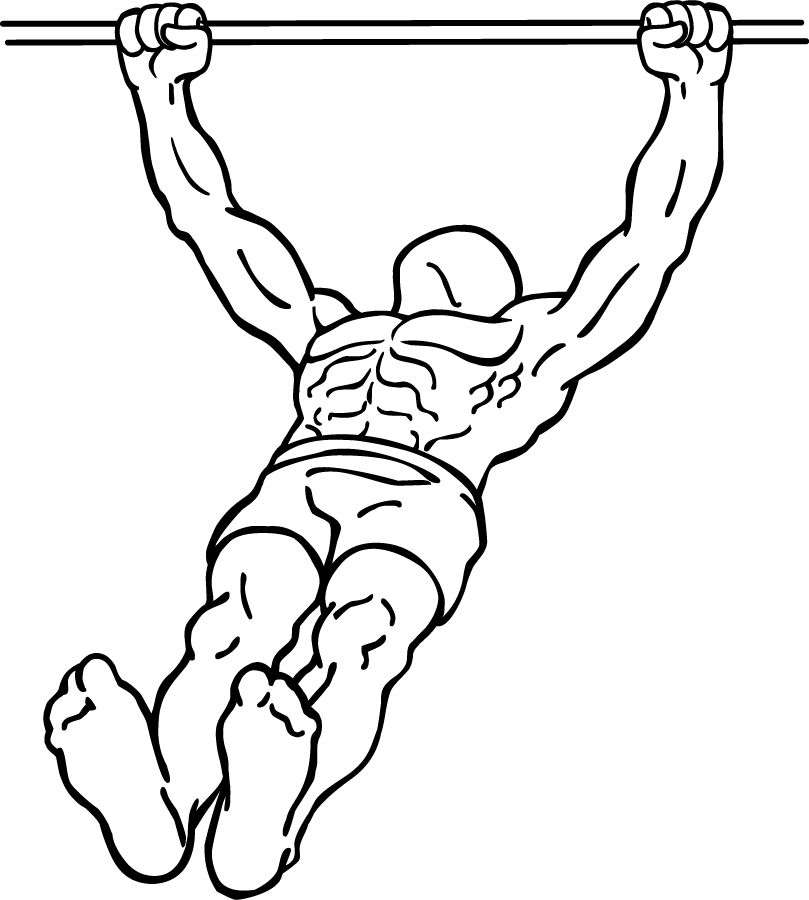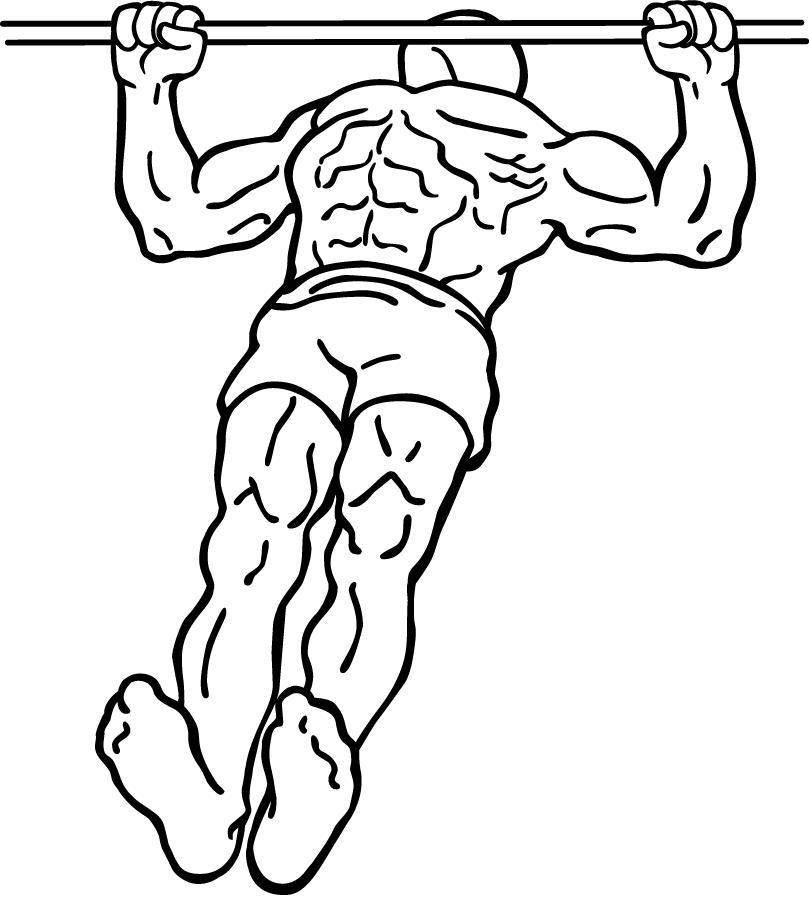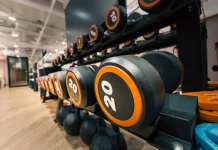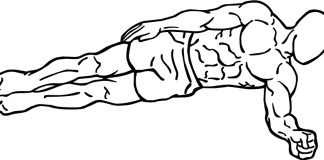Last Updated on September 30, 2014
When it comes to bodyweight exercises, the Body Row (also known as the inverted row or horizontal pull-up) is one of the most effective and versatile moves you can include in your fitness routine. Whether you’re a beginner looking to build foundational strength or a seasoned athlete aiming to maintain a strong and balanced physique, the body row offers numerous benefits.
This exercise primarily targets your chest, back, and core muscles, while also working your arms and shoulders. It mimics the motion of a pull-up but with a greater emphasis on the horizontal pulling plane, which makes it accessible to individuals at all fitness levels. By adjusting your body angle and grip, you can easily modify the difficulty of the exercise to match your current strength and progress as you get stronger.
In this comprehensive guide, we’ll cover everything you need to know about the Body Row. From its benefits and variations to step-by-step instructions, we’ll dive deep into how to perform this exercise safely and effectively.
What is a Body Row?
The Body Row is a compound movement that engages multiple muscle groups simultaneously. It’s performed by lying underneath a bar or using TRX straps, with your body suspended horizontally while your feet remain on the ground. From this position, you pull your body towards the bar or straps, engaging your back, chest, and core muscles to complete the movement. This pulling motion strengthens your posterior chain while also building endurance in your upper body.
It’s an excellent alternative to the pull-up, especially for those who struggle with vertical pulling exercises or who want to increase their overall pulling strength before progressing to more challenging movements.
Muscles Worked During Body Rows
The Body Row targets several key muscle groups:
- Back Muscles: The primary muscles engaged during the exercise are the latissimus dorsi, rhomboids, and trapezius. These muscles work together to pull your upper body toward the bar.
- Chest Muscles: Your pectoralis major plays a stabilizing role, especially when you grip the bar wide.
- Core: Engaging your core throughout the movement is essential for maintaining a straight line from your head to your heels.
- Arms and Shoulders: The biceps and posterior deltoids assist in the pulling motion, helping you complete the row effectively.
This combination of muscle engagement makes the Body Row one of the best exercises for improving overall upper body strength and posture.
Benefits of the Body Row
Incorporating Body Rows into your regular workout routine offers a host of benefits:
1. Builds Upper Body Strength
The Body Row targets your back, chest, and arms, helping to build a stronger upper body. This can improve your performance in other exercises, such as bench presses, pull-ups, and even everyday activities that require lifting or pulling.
2. Improves Posture
Many people struggle with poor posture due to sedentary lifestyles. The Body Row helps to strengthen the muscles that support proper posture, including the muscles of your upper back and shoulders. Over time, this can help to reduce back pain and promote a more upright and aligned posture.
3. Engages Core Muscles
Because you need to keep your body in a straight line throughout the movement, Body Rows also work your core muscles. Engaging your abs and glutes to maintain stability helps build a stronger, more balanced core.
4. Great for Beginners
One of the biggest advantages of the Body Row is that it can be easily modified to suit different fitness levels. Beginners can perform the exercise at a higher angle, making it easier to lift their body weight, while more advanced individuals can lower the bar or their body to increase the difficulty.
5. Improves Functional Strength
The horizontal pulling motion of the Body Row mimics the movement patterns used in everyday tasks such as pulling a door open or lifting objects. This makes it a functional exercise that helps you build strength for real-world activities.
How to Perform a Body Row: Step-by-Step Instructions
Let’s break down the proper form for executing the Body Row to ensure you get the most out of the exercise while minimizing the risk of injury.
Step 1: Set Up Your Equipment
You can perform the Body Row using a variety of equipment. The most common setups include:
- Smith Machine: Set the bar at a height that allows you to lie underneath it with your feet on the floor and your arms fully extended.
- Power Rack or Barbell: Position the bar at an appropriate height for your fitness level.
- TRX Straps: Adjust the length of the straps so that you can hang horizontally while gripping the handles.
Step 2: Get into Starting Position
- Lie Underneath the Bar: Position yourself directly under the bar, with the bar resting at about mid-chest level. Your legs should be extended with your feet firmly planted on the floor, and your arms fully extended, gripping the bar with an overhand grip.
- Engage Your Core: Draw your abs in and engage your glutes to create a straight line from your head to your heels. Avoid letting your hips sag or your lower back arch.
Step 3: Execute the Row
- Pull Your Chest to the Bar: Using your back and arm muscles, pull your chest toward the bar. Focus on engaging your upper back muscles rather than relying solely on your arms to complete the movement.
- Pause at the Top: When your chest is close to the bar, pause for a moment to maximize muscle engagement. Squeeze your shoulder blades together as if you’re trying to hold a pencil between them.
- Lower Yourself Slowly: In a controlled manner, lower your body back to the starting position. Make sure to keep your core engaged and maintain a straight line from head to heels throughout the entire movement.
Step 4: Repeat
Repeat the movement for the desired number of repetitions, ensuring that you maintain proper form throughout each rep.
Common Mistakes to Avoid
Like any exercise, there are common mistakes that can limit the effectiveness of the Body Row or increase the risk of injury. Here are a few things to watch out for:
- Letting the Hips Sag: One of the most common mistakes is allowing your hips to sag, which reduces core engagement and puts unnecessary strain on your lower back. Keep your glutes and core tight to maintain a straight line throughout the movement.
- Using Momentum: It’s essential to focus on controlled movements rather than relying on momentum to pull yourself up. This ensures that you’re engaging the correct muscles and getting the full benefit of the exercise.
- Shrugging the Shoulders: Avoid shrugging your shoulders towards your ears during the movement. Instead, keep your shoulders down and back, and focus on engaging your upper back muscles.
- Not Going Full Range of Motion: Make sure you’re pulling your chest all the way to the bar or straps and lowering yourself back down in a controlled manner. Incomplete reps limit the effectiveness of the exercise.
Modifications and Variations
There are several ways to modify the Body Row to suit your fitness level or to add variety to your workout:
1. Elevate Your Feet
If you want to increase the difficulty of the Body Row, try elevating your feet on a bench or step. This increases the angle of your body and requires more strength to pull yourself up.
2. Change Your Grip
Experiment with different grips to target various muscle groups. For example, using an underhand grip will engage more of your biceps, while a wider grip will place more emphasis on your upper back and shoulders.
3. Use Rings or TRX Straps
Using gymnastic rings or TRX straps can add an extra challenge to the exercise, as they require greater stabilization and control.
4. Single-Leg Body Row
To further challenge your balance and core stability, try performing the Body Row with one leg raised off the ground. This increases the demand on your core and engages your glutes and hamstrings more effectively.
How to Incorporate Body Rows Into Your Workout
The Body Row can be integrated into your workout in several different ways, depending on your goals:
- As a Warm-Up: Perform 2-3 sets of 8-10 reps to activate your back and core muscles before moving on to more complex exercises like deadlifts or pull-ups.
- In a Full-Body Workout: Include Body Rows as part of a full-body circuit, pairing them with other bodyweight exercises like push-ups, squats, and planks.
- As a Finisher: For a high-intensity finisher, try doing as many Body Rows as possible within a set time (e.g., 60 seconds) or aiming for a specific number of reps at the end of your workout.
The Body Row is a highly effective exercise that builds strength in your upper body, improves posture, and engages your core. Its versatility allows for easy modifications, making it suitable for everyone from beginners to advanced athletes. Incorporating the Body Row into your routine can help you develop balanced muscle strength, enhance your performance in other exercises, and build functional fitness for everyday activities.
To get the most out of your Body Row workout, remember to focus on proper form, engage your core, and control each movement. Whether you’re looking to build muscle, improve your posture, or simply enhance your overall fitness, the Body Row is a must-have exercise in your regimen.


Exercise images by Everkinetic.






